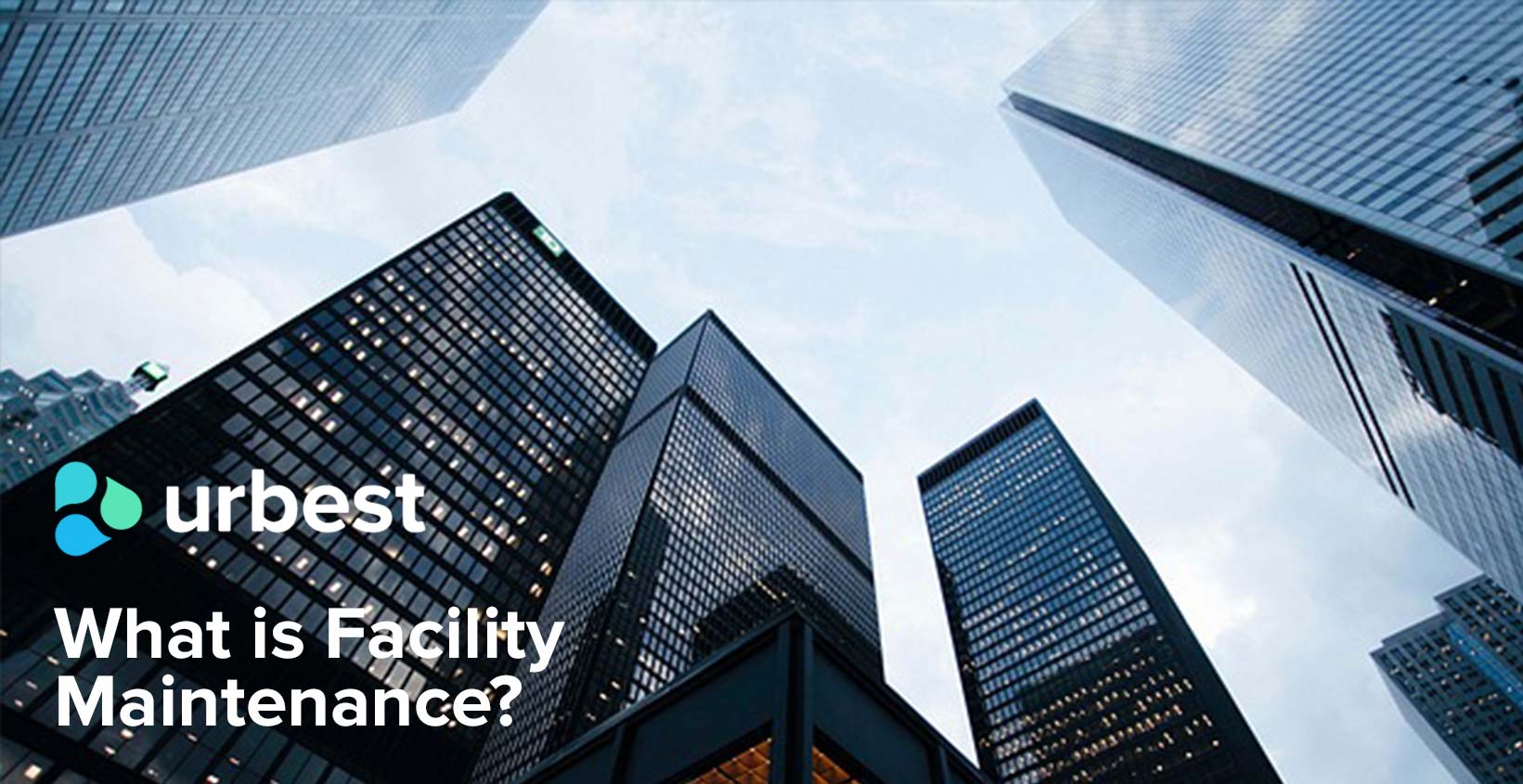What is Facility Maintenance?
Facility maintenance is the combination of all duties and tasks that are necessary to ensure that buildings, systems, and equipment operate properly, safely, and efficiently.

Introduction: Understanding Facility Maintenance
Facility maintenance is the combination of all duties and tasks that are necessary to ensure that buildings, systems, and equipment operate properly, safely, and efficiently. It's a crucial aspect of managing a facility, whether it's an office building, a retail store, a residence, or a public building.
In this article, we'll delve deeper into the intricacies of facility maintenance, why it's essential, and how an application like Urbest can revolutionize your maintenance management.

The Importance of Facility Maintenance
The significance of facility maintenance cannot be overstated in any business that relies on physical infrastructure. The primary objective is to ensure that all elements of a building - including structures, systems, and equipment - are kept in optimal working condition. This contributes not only to the efficient operation of the business but also to the safety and comfort of its occupants.
1. Safety: Well-maintained facilities promote a safer environment for employees, customers, and visitors. Broken equipment, malfunctioning systems, and damaged structures can pose significant safety risks. Regular maintenance identifies potential hazards, thus preventing accidents.
2. Efficiency: Regular facility maintenance enhances the overall efficiency of the systems and equipment in place. For example, maintaining HVAC systems regularly ensures they operate at their peak, resulting in energy efficiency and cost savings over time.
3. Longevity: Regular preventive maintenance extends the life span of equipment and building systems. Routine inspections and maintenance ensure that equipment runs smoothly, decreasing the chance of premature replacement and saving considerable money in the long run.
4. Compliance: Buildings must comply with a variety of health, safety, and environmental regulations. Regular facility maintenance ensures that a business remains compliant, thereby avoiding penalties and potential legal issues.
5. Business Continuity: A well-maintained facility ensures smoother operations and less downtime. Preventive maintenance can often detect potential issues before they escalate into significant problems that can disrupt business operations.
6. Brand Image: A well-maintained facility reflects positively on a company's brand image. Customers and clients are more likely to have a favorable impression of a business that is housed in a well-kept building.

In essence, effective facility maintenance leads to improved safety, reduced operational costs, extended equipment life, ensured regulatory compliance, smoother business continuity, and enhanced brand image. All these benefits underscore the importance of incorporating a robust facility maintenance strategy for businesses.
Facility Maintenance Strategies
Developing and implementing an effective facility maintenance strategy is crucial to achieving the benefits discussed earlier. Different strategies can be applied based on the organization's specific needs and resources. Here are some of the most common strategies:
1. Preventive Maintenance: This proactive approach involves regular inspections and upkeep to prevent equipment failure. The goal is to identify potential issues and correct them before they lead to more significant problems such as interruption of service or higher cost of replacement for equipments. Scheduled maintenance like cleaning, lubrication, and minor repairs fall under this category.
2. Predictive Maintenance: Predictive maintenance goes a step further than preventive maintenance by using advanced technologies such as IoT sensors and AI-based analytics. It involves continuous monitoring of equipment condition and performance in real-time, allowing for maintenance to be scheduled precisely when needed, thereby reducing unnecessary preventive maintenance and unexpected reactive maintenance.
3. Reactive Maintenance: This strategy involves waiting until equipment fails and then taking corrective action. While it can be less costly in the short term, reactive maintenance can lead to longer downtime, more extensive repairs, and potential damage to other systems.
4. Reliability-Centered Maintenance (RCM): This is a complex but highly efficient maintenance strategy that focuses on identifying and preserving system functions. It involves selecting maintenance strategies that ensure reliability based on the importance of the equipment to the organization's mission.
5. Total Productive Maintenance (TPM): This holistic approach aims to maximize equipment effectiveness by involving all employees, from top management to frontline operators, in maintenance activities. It focuses on proactive and preventive maintenance to boost production efficiency and worker morale.
A well-chosen mix of these strategies, tailored to an organization's needs, can significantly improve facility maintenance efficiency. However, it's important to remember that successful facility maintenance also requires the right tools. Urbest, for instance, is a collaborative application that can help streamline the process of managing and tracking maintenance tasks, planning interventions, and managing regulatory controls. Through Urbest, facility maintenance becomes a well-coordinated, transparent, and efficient process. For total productive maintenance and wide communication between all workers, a good collaborative app is more than necessary.
How Urbest Can Help
When it comes to effective facility maintenance, having the right tools is just as important as having a sound strategy. This is where Urbest steps in, offering a comprehensive solution that revolutionizes how facility maintenance is managed.
1. Streamlined Management of Maintenance Tasks: Urbest's platform allows for an organized overview of all maintenance tasks. With its intuitive interface, you can easily track the status of each task, from initial reporting to final resolution. This reduces the chances of tasks falling through the cracks or being forgotten.
2. Efficient Planning of Interventions: Urbest not only allows you to track ongoing tasks, but it also offers features to schedule preventive and predictive maintenance tasks efficiently. This proactive approach reduces the likelihood of unexpected breakdowns and increases the lifespan of your facilities. Shared calendars on future tasks also facilitate the work for technical teams and supervisors.
3. Regulatory Control Management: Keeping up with regulatory controls in facility management can be a daunting task. Urbest simplifies this by providing a centralized checklist where you can monitor compliance with green/yellow/red ticks. If necessary, create actions from checks, and maintain comprehensive records for auditing purposes.
4. Enhanced Communication: Urbest's collaborative platform facilitates open communication between all parties involved in facility maintenance. It provides a shared space for discussion by tasks to discuss what needs to be done, by whom and the results. This not only leads to faster resolution of issues but also fosters a culture of collaboration and continuous improvement.
5. Data-Driven Decisions: Urbest provides valuable insights and analytics derived from your maintenance data. This can help you identify trends, pinpoint recurring issues, and make informed decisions to improve your maintenance strategies over time.
In conclusion, Urbest isn't just a tool—it's a booster to supercharge your teams and empower organization to elevate their facility maintenance strategies. It offers a range of features designed to simplify, streamline, and enhance all aspects of facility maintenance, leading to improved efficiency, cost savings, and a better working environment.
Conclusion
Facility maintenance is an indispensable aspect of managing any facility. It's not just about repair work; it's about taking a proactive approach to ensure your facility's systems and equipment are operating at their peak efficiency, and thus, maximizing their lifespan.
By leveraging technology like Urbest, you can significantly improve your facility maintenance management, saving time, resources, and ultimately, enhancing your bottom line.
